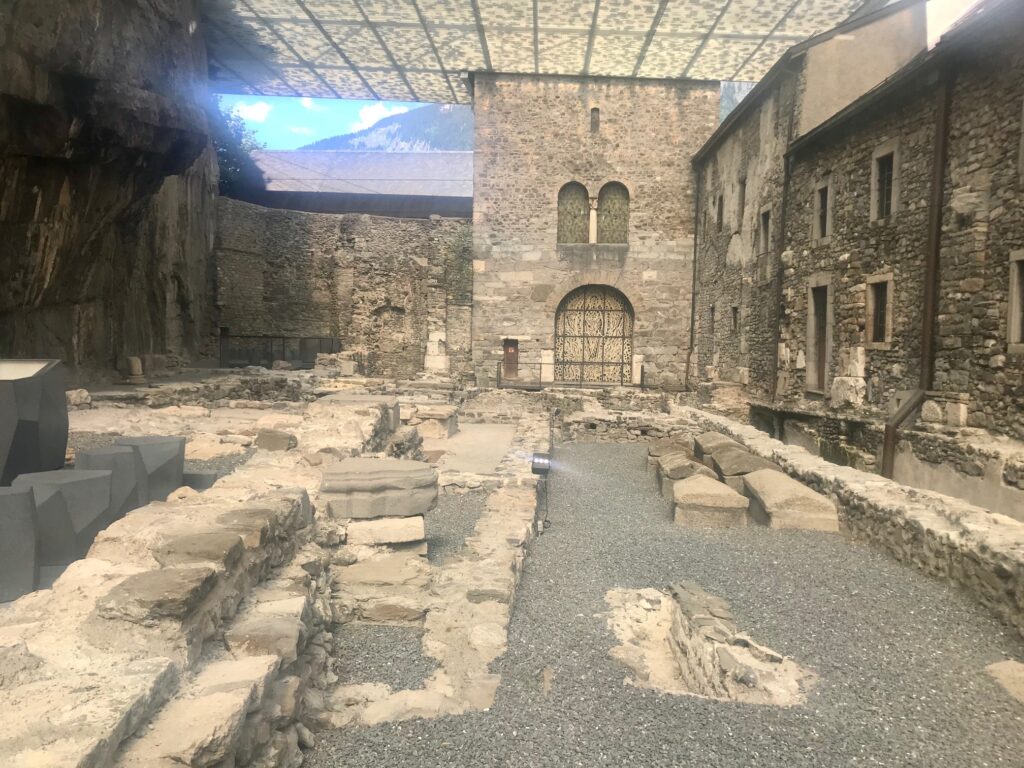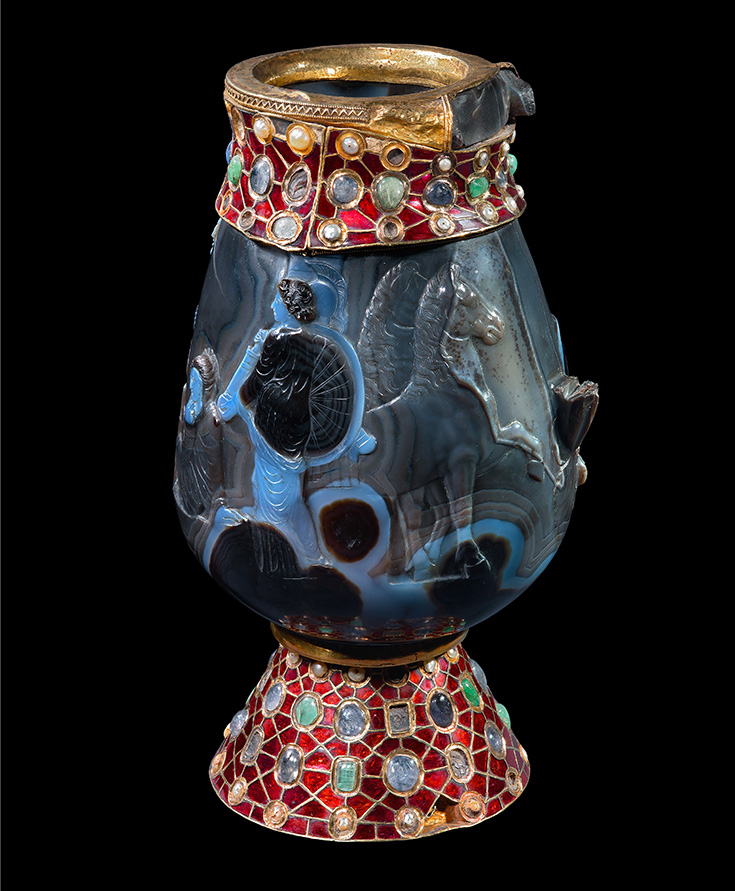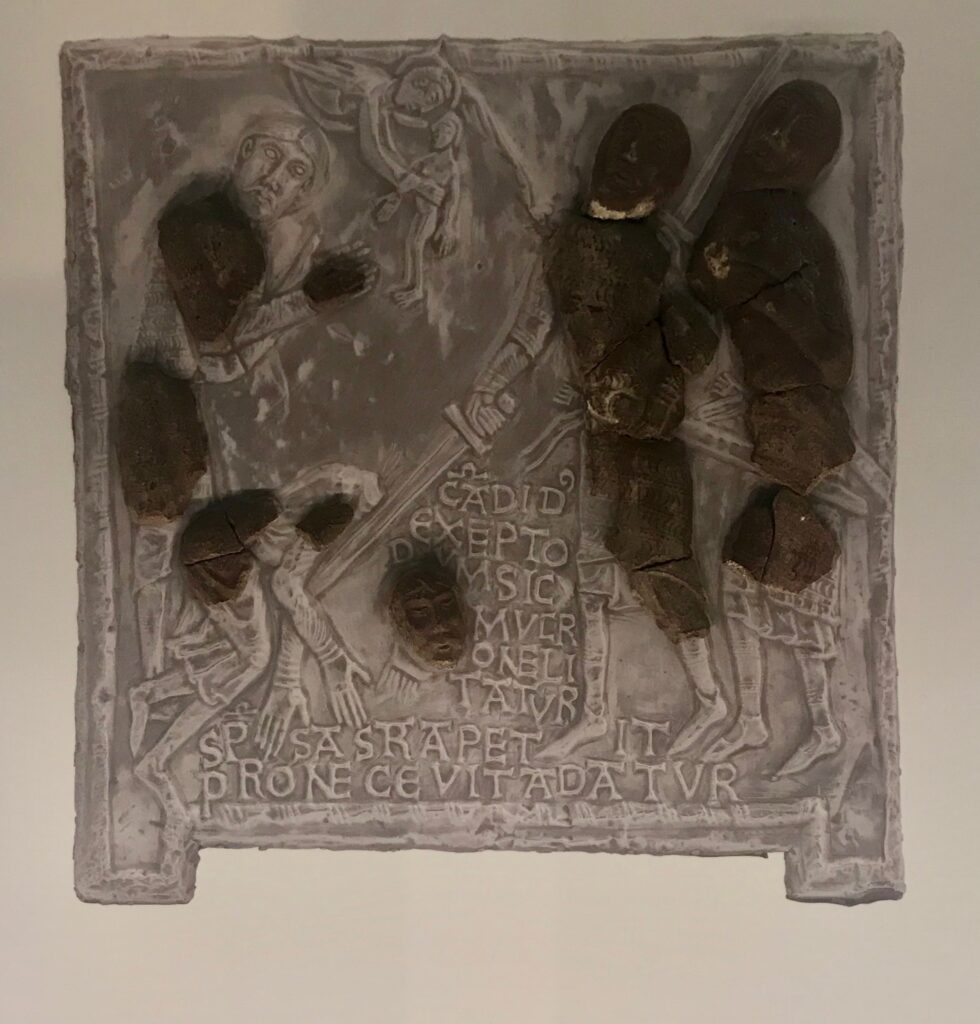With the number of COVID-19 cases in rapid decline throughout Switzerland, Meseret and I decided to take a day trip to Sion and Saint Maurice. I’ll focus this blog entry on Saint Maurice only, however, as other Global Horizons members have previously written about their time in Sion.
Just a few minutes from the train station is the city’s crown jewel: the Saint-Maurice d’Agaune Abbey and Treasure. Founded in 515 by King Sigismund of Burgundy, the abbey is a prominent stop along the Via Francigena, or the pilgrimage route that connects St Peters in Rome to northwestern Europe. It is dedicated to Saint Maurice, a third-century Theban military saint who was popular among the kings of Burgundy and the princes of Savoy. Typically armed with a lance and shield, he was the patron saint of the Holy Roman Empire from the tenth century onward. In many Germanic countries, he is often represented as black in the mid-thirteenth century and thereafter.

The two most striking aspects of Saint-Maurice d’Agaune are its palimpsestic architecture and treasury. After visiting the church, we entered a partially open-air archaeological site that—with the help of excellent and newly installed educational displays—reveals the abbey’s complex architectural history. We were able to simultaneously see the site of the original tomb of Saint Maurice as well as parts of the five earlier churches.

The collection of the treasury is astounding, and thanks to the recent research and curatorial work of Pierre-Alain Mariaux, it is also now more intellectually accessible than ever before. A few standouts include St Martin’s vase (ca. 20 BCE vase with a fifth- or sixth-century setting), the ewer of Charlemagne (1st half of the ninth century), and the châsse of St Sigismund and his children, which was made in the so-called Saint-Maurice workshop (12th century). Perhaps my favorite, however, is the head reliquary of St Candidus (ca. 1165). In neighboring drawers and display cases, we found former contents of this reliquary, including twelfth-century textiles and relic labels from the Holy Land, a head cap (kamelkaukion) that likely belonged to Count Amadeus III of Saxony (1103-1148), and bits of wax that a goldsmith put below the silver plate to prevent deformations.

On a more personal note, the trip felt significant in a couple of ways. It was my first art-related trip since the outbreak of the pandemic, and so to study such an exceptional site and collection of objects in person—and not on a screen!—was a veritable treat. But more importantly, visiting the abbey of Saint Maurice seemed particularly timely in the wake of ongoing Black Lives Matter protests throughout the globe. With the start of the fall semester only a couple of months away, I am actively thinking about ways that I can bring what I learned at the abbey into the classroom. Namely, that studying St Maurice the person, his relics, those sites that bear his name, and his modern-day (mis)appropriations might offer students an important way into thinking about black representation and erasure in the Middle Ages and beyond.
